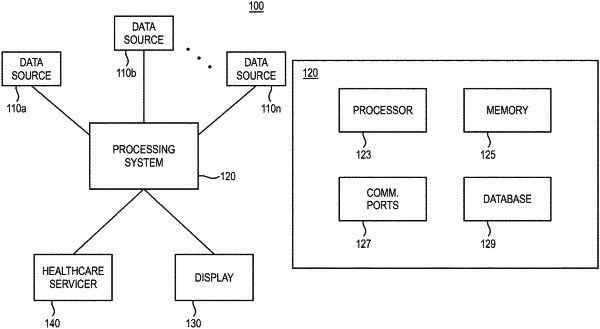| CPC G16H 70/40 (2018.01) [G16H 10/60 (2018.01); G16H 50/30 (2018.01); G16H 70/20 (2018.01); G16H 70/60 (2018.01)] | 18 Claims |

|
1. A method to evaluate a patient's risk of drug treatment change due to a category misidentification, comprising:
generating a predictive model for evaluating the patient's risk of drug treatment change, wherein the predictive model includes a plurality of analyzer channels to customize or fine tune the predictive model,
wherein the generating of the predictive model includes training the predictive model by iteratively adjusting a weight of one or more of the plurality of analyzer channels until the predictive model passes the training to reduce the misidentification by the predictive model of the risk of drug treatment change by:
acquiring data of a subject population (X) by extracting the data from one or more data sources using at least natural language processing,
identifying patients (Y) as a first subset of the subject population (X) based on at least one criterion,
identifying patients (Z) as a second subset of the subject population (X) by producing a risk score of each individual in the subject population using the predictive model,
determining a correlation between (Y) and (Z) for the patients' risk of drug abuse,
determining whether the correlation between (Y) and (Z) at least meets a predetermined threshold,
if the correlation does not at least meet the threshold, adjusting the weight for the one or more of the plurality of analyzer channels of the predictive model to customize or fine tune the predictive model and repeating identifying patients (Z), determining a correlation between (Y) and (Z), and determining whether the correlation at least meets a predetermined threshold in accordance with the adjustments,
if the correlation at least meets the threshold, outputting the predictive model by incorporating the predictive model in a healthcare records system;
applying the predictive model to data of a patient;
determining a patient risk score for the patient being misidentified as being at risk of abusing a drug used in the drug treatment based on a result of the applying the predictive model to the data of the patient;
not reducing or cancelling an amount of the drug treatment based on the patient risk score, when the patient is misidentified as being at risk of abusing the drug and is benefiting from the drug treatment.
|